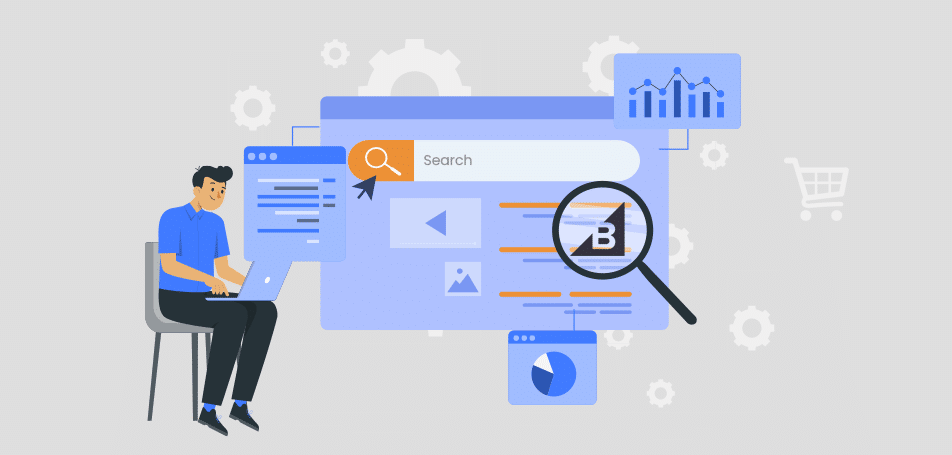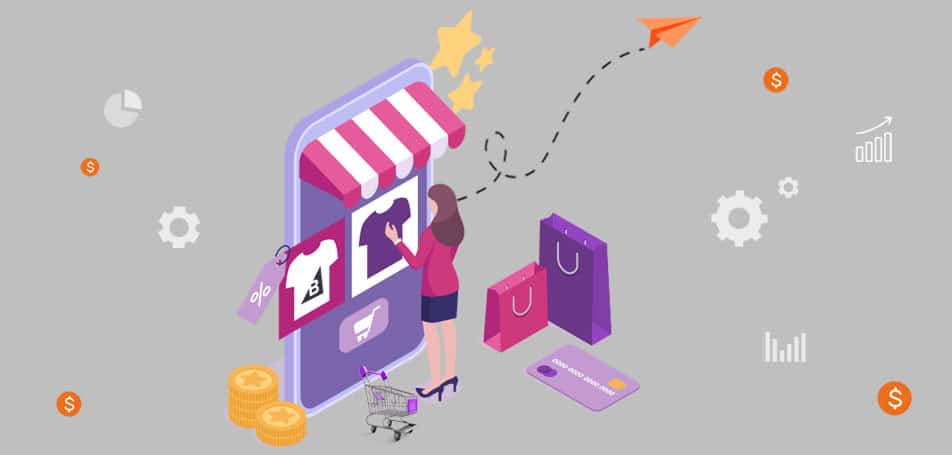
Are you thinking of moving your eCommerce business to BigCommerce? Then this blog post is right for you. We know that the task of eCommerce platform migration is an uphill task. However, you don’t need to worry about the migration journey. In this guide, we will take you through the details of the BigCommerce migration process from your existing eCommerce platform.
When Should a Business Consider Platform Migration?
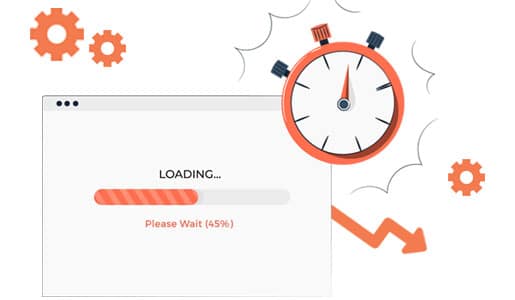
In the eCommerce industry, change is inevitable. To meet the evolving needs of customers and the marketplace, so should the eCommerce platforms.
Well, platform migration becomes inevitable under the following circumstances. Often these situations coincide with organizational changes, changing company demands, and technological improvements. Let’s examine a few typical situations.
Functional Constraints
It’s time to think about switching platforms when your present solution can no longer satisfy new functional demands or doesn’t have capabilities essential to the expansion of your company. Expanded capabilities may be provided by switching to a more modern product, which will increase productivity and operational effectiveness.
Business Growth
As businesses evolve so do their digital demands change. We have seen often that some client’s existing platforms can’t handle the traffic surge, data, or new business operations. In such cases, we recommend switching to a system that can accommodate your expanding business requirements becomes essential.
Lack of Integrations and Scalability
Often a company’s growth may be constrained by a platform that isn’t scalable. The overall operational efficiency may suffer if your present system cannot effectively interface with other important apps. Platform migration may provide your IT (Information Technology) ecosystem with the scale and seamless integration it needs.
Problems with The Support
With your existing platform vendor, you can have problems like a lack of timely updates or subpar service. Alternately, the product may be set to be discontinued or the version you are running may be nearing the end of support. In these situations, moving to a more trustworthy provider can guarantee continuous company operations.
Security Issues
Your present system’s security flaws might expose your company to expensive dangers. Changing to a platform with cutting-edge security features will help you protect your company’s data and retain client confidence.
Difficulties with User Experience
Due to frustrating processes, and time wastage, a platform that isn’t user-friendly or doesn’t provide an intuitive user experience can severely affect business performance. The user experience may be greatly enhanced by moving to a different platform, which will have a positive impact on company results.
Ownership Cost
We have seen that maintaining older platforms proves costly because of high licensing fees or operational costs. Migrating to another platform can save a lot of such costs. Wondering, how? Migration to a new platform would reduce licensing fees associated with outdated systems and high maintenance costs.
However, migrating to a new eCommerce platform is often a voluntary decision for the merchants. But as soon as a business starts to expand, migration to other platforms becomes a common affair, especially to avoid the aforementioned problems.
At Wagento, we have seen clients requesting us to migrate their existing eCommerce site to other platforms. To demonstrate it better, we would like to share our experience of migrating the existing website of a client from one platform to another.
Sharing Our Client’s Replatforming Story

The client in question is – Hyde Park Jewelers.
Hyde Park Jewelers
Hyde Park Jewelers offers a renowned lineup of distinguished timepieces and designer jewelry collections. They partnered with Wagento in order to switch their site to BigCommerce. Well, they were previously on Magento and not happy with the results of the Magento platform. Thus, they installed their website on BigCommerce. The migration to BigCommerce helped them see a double-digit sales growth.
Hence, it’s clear that replatforming or migrating to another platform is not always a wrong decision. It can be beneficial for businesses, in terms of their sales growth.
Well, this is a unique case of a brand migrating from one popular eCommerce platform to another.
But is it only for increasing the sales figure that brands consider migration? Not really! There are many other reasons that might compel brands to make the decision to migrate or move to another platform.
In this guide, we will take you through some of the reasons that compel merchants to migrate from their existing platform to BigCommerce.
What Makes Migration to BigCommerce an Added Advantage?
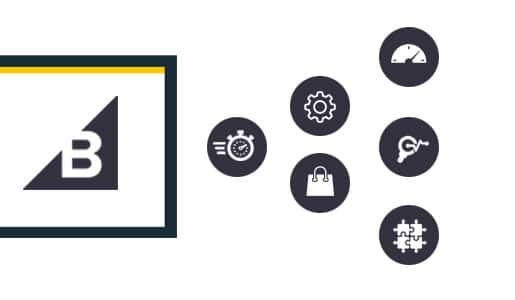
Each business is unique. Hence, in the dynamic world of eCommerce, staying ahead of the curve is of supreme importance. In fact, it’s better to invest in technology that would offer the flexibility to respond to any unexpected changes that might happen today. Also, it should be able to adapt to the needs of customers and business soon.
For ambitious merchants seeking a robust and versatile solution, migrating to BigCommerce offers a seamless path forward. Let’s delve into the compelling reasons why eCommerce businesses are opting to migrate to BigCommerce.
Enhanced Performance
Your eCommerce website serves as the virtual front porch of your business. If it’s underperforming, your growth potential is bound to get stifled. BigCommerce, which is mostly renowned for its performance optimization, will ensure that your online store operates seamlessly, even during high-traffic periods.
So, if you are struggling with slow load times, then it’s time to say goodbye to slow-loading pages and lost customers. Once you migrate to BigCommerce, you won’t face any such issues.
Unmatched Scalability
Another compelling reason for BigCommerce migration is its unmatched scalability. Well, eCommerce is all about growth, and the platform you are using should be able to scale up. It shouldn’t cause a hindrance to your growth. This is where we have seen the BigCommerce platform excel.
BigCommerce is engineered for scalability. Thus, allowing your business to expand effortlessly. Whether you’re doubling your product catalog or experiencing a sudden surge in sales, BigCommerce adapts and ensures your store remains agile and responsive.
Cost-Efficiency
The total cost of ownership (TCO) is a crucial factor in eCommerce success. Older platforms often come with hefty maintenance costs. In contrast, BigCommerce offers a cost-effective solution, freeing up resources that can be redirected toward innovation and business growth. You’ll no longer be burdened by excessive TCO.
Seamless Adaptability
Customer preferences evolve rapidly, and your platform must keep pace. BigCommerce empowers you with a wide array of features and add-ons to cater to changing customer needs. Whether you need omnichannel selling capabilities, advanced analytics, or integrations with third-party tools, BigCommerce has you covered.
Comprehensive Ecosystem
BigCommerce provides access to a thriving ecosystem of apps, themes, and plugins. This ecosystem facilitates customization and personalization, allowing you to craft a unique and immersive shopping experience for your customers. Tailor your store’s functionality to align perfectly with your brand vision.
Robust Security
Security is non-negotiable in eCommerce. BigCommerce employs top-notch security measures, including SSL (Secure Sockets Layers) certificates, DDoS protection, and PCI compliance, to safeguard your customers’ sensitive data. Rest easy knowing that your online store is fortified against cyber threats.
Effortless Migration
Transitioning to BigCommerce is a seamless process. With dedicated migration tools and expert support, you can migrate your data, including products, customer information, and order history, with minimal downtime. BigCommerce’s user-friendly interface ensures a smooth learning curve for your team.
24/7 Support
BigCommerce doesn’t just provide a platform; it offers unparalleled support. Enjoy access to a round-the-clock support team, ready to assist you with any queries or challenges you may encounter. Your success is their priority.
In conclusion, migrating to BigCommerce is a strategic move for eCommerce businesses seeking growth, agility, and innovation. This dynamic platform empowers merchants to deliver exceptional shopping experiences while optimizing performance, scalability, and cost-efficiency. Elevate your eCommerce game with BigCommerce and position your online store for unprecedented success. Make the move today and embark on a journey of eCommerce excellence.
What Are The eCommerce Migration Options?
Migration, especially for eCommerce businesses is a common thing. However, one thing that must be kept in mind about eCommerce migration is that it is not a simple lift-and-shift of the platform. Whatever approach one takes involves some time and includes data migration services.
Now, let’s look at the type of migration options available for merchants.
Platform to Platform
This kind of migration calls for moving a site from an existing solution to another. This might include moving a site from one SaaS (Software as a Service) to another, a monolithic solution to another, or from on-premise to cloud migration.
Monolith to Headless
In this type of migration, the frontend and backend are decoupled. Thereby giving developers the option of more flexibility. Also, third-party APIs are often kept as part of the process.
Phased Migration
In this type of migration, pieces of the existing eCommerce platform are transitioned. Basically, instead of moving everything at once, only parts of the module are transitioned at a time.
Fundamental Steps for Managing a Platform Migration
Every business is unique. However, the fundamental steps associated with platform migration described in this blog will provide you with a foundation for migration that you may modify to meet your business needs.
Step 1: Set a Launch Date and Plan Accordingly
When considering a platform migration, it’s crucial to pinpoint a launch date. This becomes especially vital if you’re racing against time due to reasons like an upcoming platform’s end-of-life, an imminent internal retirement, urgent security updates, or significant sales events like Cyber Monday. These factors give you a concrete date to reverse engineer your planning.
There is nothing wrong with accepting that the stakeholders of an organization usually have certain expectations regarding when the new platform should be up and running for their business.
Hence, as a migration partner, we find it’s a smart move to clarify these expectations early on. By doing so, we can then create a structured timeline.
For example, if the CEO of a brand expects the eCommerce platform to be operational by November, but there’s a simultaneous demand for a new analytics tool from the CTO, then you might suggest introducing the analytics feature after the initial launch.
Even if there isn’t an urgency to switch platforms, internal stakeholders will have their own set of expectations. Maybe the CFO wants the expenses to be accounted for in a particular fiscal year.
This approach can help streamline the transition process. Without a set timeline from the get-go, you lose the leverage of time-based negotiations. Hence, it’s essential to identify and align with these expectations to formulate a feasible timeline.
What’s Our Take on This?
Platform migration is a significant undertaking. It’s not ideal to discover issues, like inventory mismatches or workflow errors post-launch. So, regarding platform migration, if you’re dealing with a high-traffic site, consider directing only a fraction of your web traffic to the new platform initially, increasing it gradually.
This phased approach can reduce the risks associated with a complete switchover. Your launch strategy should encompass such nuances, differentiating between a soft launch and a full-scale launch. Lastly, while charting out your timeline, ensure you allocate ample time for comprehensive testing.
Step 2: Identify Key Business Goals
Setting a launch date is just the beginning. It’s equally vital to outline what the day-to-day operations will look like once the new platform is live. A practical approach is to use the current platform’s features and user experience as a reference point and then fine-tune the migration based on business needs.
Wondering why so? The requirements of your company are distinctive, as well. Make sure you have a clear idea of your company’s needs. Also, have a clear idea of how your potential platform fits into the picture before starting any migration activities.
In expansive migration projects, especially those with ambitious objectives, there might be a temptation to overhaul every third-party service. However, we would like to give you one word of caution: with numerous applications and services integrated into your existing platform, being overly ambitious might derail the timeline set in Step 1.
Engage with all key stakeholders to understand their aspirations for the new platform. This list typically encompasses:
- Customer Support
- Logistics (shipping and warehousing)
- Channel Management (franchise heads, store managers, marketplace overseers, sales support, etc.)
- Digital Marketing
- Sales
- IT
- Brand Strategist
- Finance and Accounting
At this juncture, it’s common to review system diagrams. These can range from enterprise architecture visuals, illustrating the interrelation between systems, to data flow charts that detail transaction pathways between systems.
Drafting a preliminary version of these diagrams, with a vision of the post-migration state, can be invaluable. Such visual aids facilitate scope negotiations with both internal teams and third-party collaborators.
What do we suggest?
List all the limitations that your current platform has. What are its restrictions and boundaries? Once this has been done, make sure the new platform includes features that are equal to or better than the existing platform.
You may also establish new objectives for your e-commerce firm and see whether your new prospective platform can support them.
It’s not uncommon to revisit and refine these goals, adding more detail or adjusting expectations based on data and feasibility.
Step 3: Formulating and Prioritizing Your Requirements
Your journey toward building a successful eCommerce platform begins with crystallizing your requirements, which are inherently derived from your goals. It’s likely that you’ll carry over some requirements from your existing e-commerce setup.
These can encompass crucial elements like integrating specific tools, web features, compatibility with various payment gateways, and support for sales tax services and marketing instruments.
Precision is key when documenting these requirements. For instance, if you plan to integrate with an ERP system, ensure that you provide comprehensive details before diving into development:
- All online orders should be promptly routed to the middleware application via REST API once they are marked as paid.
- The product data should automatically populate the dropship flag through the PIM (Product Information Management) as part of the product data import.
These detailed requirements play a pivotal role in guiding your developer team or agency/systems integrator on what needs to be constructed.
Furthermore, they provide clarity to your internal stakeholders regarding what they should anticipate during end-to-end testing. In these instances, consider that a merchandiser might notice a missing dropship flag on a product and proactively raise it as an issue.
Without such meticulously documented requirements, such use cases might remain untested, and go unexamined since no products would possess the flag. In this scenario, your customers inadvertently become the first line of quality assurance for your new site.
List the Essential Integrations
Be sure to account for additional services you utilize for your business. Let’s say you utilize Salesforce CRM or HubSpot. Is integration supported by your new platform? Discover what your new platform can do out of the box and what could cost more money.
Step 4: Compose an Inquiry for Proposals
If you don’t already have any great possibilities, you might create a request for proposals and distribute it to other eCommerce solution providers. You are free to be as detailed or broad as you desire. Vendors frequently have what you need or can make solutions specifically for your use case.
What do we suggest?
If you’re navigating an RFP process for a platform or agency, these requirements will serve as critical submissions. They validate the suitability of the platform and the cost estimate provided by the agency. Though this process can be time-consuming, it’s crucial not to rush, especially when working within tight timelines. This phase is where you must meticulously compare specific requirements against the overarching project schedule.
Ranking Your Requirements:
You must rank your requirements in the proposal, in the following manner.
- Wishlist
- Nice-to-Have
- Must-Have
Remember, during this phase, you’ll be negotiating the timeline established while aligning it with the goals and requirements. Understanding the distinction between must-have (such as requirement 1 in our example) and nice-to-have (where a merchandiser can manually set the dropship flag) is of utmost importance.
Navigating this process can become intricate if you’re collaborating with multiple brand teams or regional stakeholders, each with their own perspectives on what constitutes a must-have.
In such cases, it’s imperative to have senior leadership step in and resolve any differences unequivocally. Whether or not all parties unanimously agree on the final set of requirements and their prioritization, it is crucial to present a unified front when communicating with external parties responsible for licensing and constructing your new site.
Step 5: Figure out Your Overall Cost of Ownership
How much will BigCommerce migration cost your company? Planning more effectively might be a benefit, especially if you’re on a tight budget.
Other fees are:
- Fees For Repairs and Upkeep
- Performance and Load Testing
- Costs for the developer, designer, and engineer
- Hosting Expenses
- Surcharges And Fees for Increased Traffic
- Infrastructure
- Site Safety
- Expense of Data Migration
- Downtime Cost
- Licensing for Software
Step 6: Choose a Platform
It’s time to choose after weighing all the ideas against your demands in terms of money and technicality.
Selecting a platform that allows for modification might help you get a better fit, even though it is uncommon to find a platform that suits every item on your wish list.
Planning A Migration? Hire Wagento!
We all know that BigCommerce is a rapidly expanding SaaS platform with many features and functionalities. This platform is usually preferred by medium to big-scale businesses, especially if they are thinking about migration. Why? This platform is known for its robust ecosystem of integrations, its ability to handle many product catalogs, and its ability to help businesses operate smoothly and grow their store.
However, BigCommerce migration requires a proper understanding of the platform. Hence, BigCommerce migration should be taken by agencies who have a good understanding of the platform.
As a BigCommerce Elite partner, our team holds a good knowledge of this platform. So, if you are considering BigCommerce migration, we would love to walk you through the process. Just give us a call.
We Are BigCommerce Migration Experts
Our team of Certified BigCommerce Developers has successfully carried out various eCommerce migration projects, guaranteeing a hassle-free shift to the BigCommerce platform from any other eCommerce platform.
Why Wagento?
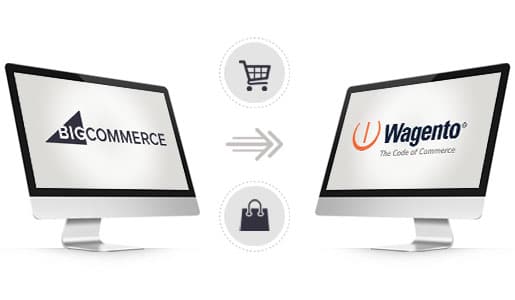
Still, not convinced! Wondering if we would be the right fit for your business or not. Then look at the data below:
- 3+Years of BigCommerce Partnership
- 13+ Years of Industry Expertise
- BigCommerce Certified
Our Thoughts
Like any other task, there are some risks associated with an eCommerce migration. If you don’t have the knowledge and technical expertise to handle redirects, move the data, or manage the complexities associated with this BigCommerce migration process things can get simply wrong for your store. Hence, it’s better to seek professional help from Wagento on this matter.
Talk to experts about BigCommerce migration and make the migration process less intimidating for you.



